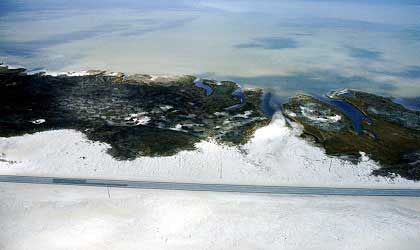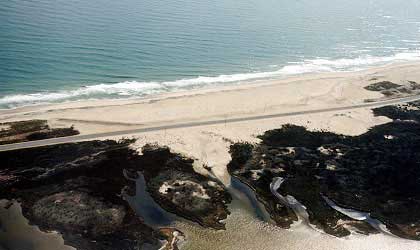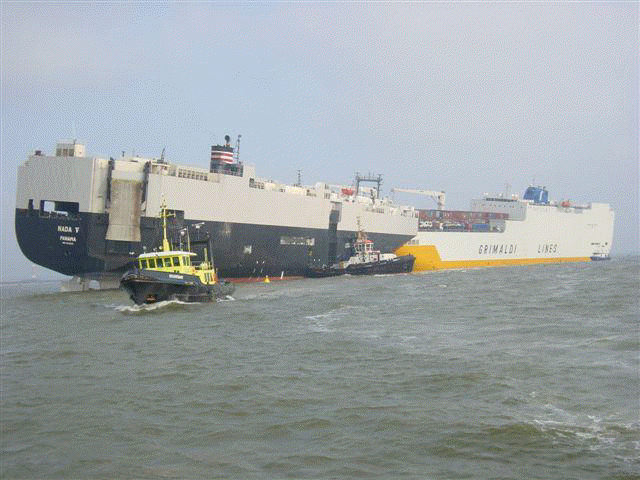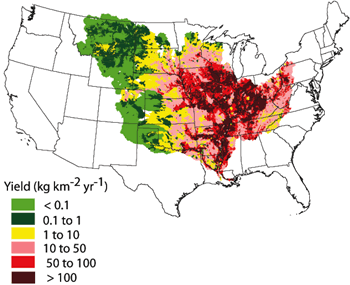According to the N&O, Walter Jones would like to use proceeds from offshore drilling to fund
beach renourishment and dredging projects. Since federal funds for these types of projects have dwindled over the years, I bet that is appealing for some communities such as
Nags Head.
Can these projects bring enough revenue to coastal communities such that the benefits outweigh the potential environmental costs?
According to the
Florida Chapter of the Sierra Club:
If that should happen, we should know that:
- Offshore drilling activities lead to the destruction of coastal wetlands. In Louisiana, where oil and gas development has been conducted for 50 years, close to 62 square miles of wetlands are lost each year.
- The pollution from offshore rigs causes a wide range of health and reproductive problems for fish and other marine life.
- Oil and gas operations dump more than 1 billion pounds of mercury-contaminated drilling fluids into the Gulf each year. Mercury levels in the sand around some Gulf rigs are three times higher than levels found at EPA Superfund sites where fishing is prohibited. Mercury levels in marine creatures living around these rigs are at least 25 times higher than in fish found elsewhere in the Gulf. Why then is the oil industry promoting rigs as "fish-rich oasis in the vast desert of the Gulf"? Tests of 70 coastal residents who ate Gulf-caught fish at least once a week show mercury levels of 5-10 times the EPA’s safe level for mercury in the human body. Since Gulf-caught fish are shipped all over the country, this is a health hazard of national proportions.
- "Routine" offshore drilling operations dump thousands of pounds of drilling muds into the ocean that contain toxic heavy metals such as lead, chromium and mercury.
- A single production platform, which can drill 50-100 wells, discharges over 90,000 metric tons of drilling fluid and metal cuttings into the ocean.
- A single exploratory well dumps approximately 25,000 pounds of toxic metals into the ocean.
- A single offshore rig emits the same air pollution as 7,000 cars driving 50 miles per day.
- The continued use of fossil fuels poses a particular threat to the residents of Florida. Fossil fuels increase global warming which leads in turn to the melting of the polar icecaps. In Florida, this will result in serious sea-level rise, while the higher temperatures will lead to more tropical diseases and heat-related deaths.
Spill statistics can be found
here. Below is a graph of spills in the Gulf, between 1996 and 2007, which were greater than 50 bbls. Notice the higher number of spills associated with significant hurricanes. In 2005, the year Katrina and Rita ravaged the Gulf, 49 spills, each greater than 50 bbl, contributed roughly 15154.3 bbl.

Is this a substantial amount of oil? Deroy Murdock,columnist with Scripps Howard News Service, says
no in an op-ed piece in the Seattle Post Intelligencer:
Feinstein is correct. U.S. offshore oil drilling is not perfectly tidy. It's only 99.999 percent clean. Indeed, since 1980 -- as MMS figures indicate -- 101,997 barrels spilled from among the 11.855 billion barrels of American oil extracted offshore. This is a 0.001 percent pollution rate. While offshore drilling is not 100 percent spotless, this record should satisfy all but the terminally fastidious.
Ironically, in terms of oil contamination, Mother Nature is 95 times dirtier than Man. Some 620,500 barrels of oil ooze organically from North America's ocean floors each year. Compare this to the average 6,555 barrels that oil companies have spilled annually since 1998, according to MMS.
I look forward to reading more debate on this. I still hold the opinion that we, as a nation, need more a substantial energy policy. It seems to me that this should be a small part of this larger debate, not a central issues.











































